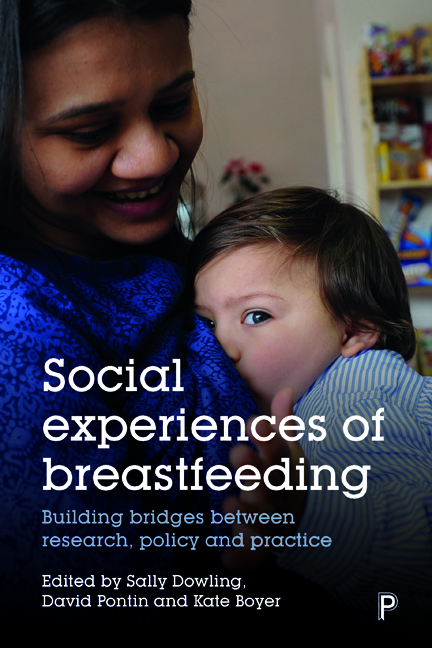Book contents
- Frontmatter
- Dedication
- Contents
- List of tables and figures
- Notes on contributors
- Acknowledgements
- Introduction
- The UK policy context: reconfiguration of the Unicef UK Baby Friendly Initiative to reflect the importance of relationships and ensuring sustainability
- Part I Breastfeeding and emotions
- Part II Cultures of breastfeeding
- Part III Breastfeeding and popular culture
- Conclusion
- Appendix: Schedule for ESRC Seminar Series: Social Experiences of Breastfeeding: Building bridges between research and policy, 2015–16
- Index
eleven - Encountering public art: monumental breasts and the Skywhale
Published online by Cambridge University Press: 22 April 2022
- Frontmatter
- Dedication
- Contents
- List of tables and figures
- Notes on contributors
- Acknowledgements
- Introduction
- The UK policy context: reconfiguration of the Unicef UK Baby Friendly Initiative to reflect the importance of relationships and ensuring sustainability
- Part I Breastfeeding and emotions
- Part II Cultures of breastfeeding
- Part III Breastfeeding and popular culture
- Conclusion
- Appendix: Schedule for ESRC Seminar Series: Social Experiences of Breastfeeding: Building bridges between research and policy, 2015–16
- Index
Summary
Introduction
This chapter is grounded in the idea that more visual imagery of breastfeeding will contribute to its normalisation, and counter the commercial sexualisation of breasts. I suggest, however, that this strategy is not just about seeing but also about feeling. To demonstrate this I turn to a controversial piece of public art – Patricia Piccinini's Skywhale – which was launched in Australia in 2013 and has been touring internationally. The Skywhale is a hot-air balloon in the shape of a fantastical creature of the imagination, which features five giant breasts on each side. This unexpected flying mammal provokes responses wherever it goes, and arguably provides productive ways of engaging public responses to breastfeeding and maternity. In this chapter I examine responses to Skywhale through broadsheet and social media, and then analyse its affective domain through psychoanalytic concepts and its materiality through the tradition of public art and monuments. The extremes of intimacy and monumentality configured through Skywhale offer an object par excellence for seeing breastfeeding writ large in the public domain, and for feeling the return of the maternal. This, I argue, is fundamental to a shift in perceiving breasts as maternal, and breastfeeding as normative.
Debates around breastfeeding in public often rest on a perceived dichotomy between sexualised breasts being an accepted and ubiquitous aspect of public visual culture, and baby-feeding breasts being an apparently unacceptable – because unusual – public sight and therefore a spectacle. Garland-Thomson reminds us that despite a long cultural history of maternal breasts being ‘on view’, they have now ‘almost entirely receded from view’: ‘We expect maternal breasts to be sequestered in private spaces whereas erotic breasts are unremarkable staples of public visual culture’ (Garland-Thomson, 2009: 143). To gauge the impact of seeing breastfeeding, Hoddinott et al (2010) developed a ‘Seeing Breastfeeding’ scale to examine the relation between women's reaction to seeing breastfeeding and their likelihood of breastfeeding their babies. From their study of over 400 women in Scotland they found that ‘the most important predictor of intending to breastfeed was the woman's attitude to her most recent experience of seeing breastfeeding’ (Hoddinott et al, 2010: 134).
- Type
- Chapter
- Information
- Social Experiences of BreastfeedingBuilding Bridges between Research, Policy and Practice, pp. 205 - 218Publisher: Bristol University PressPrint publication year: 2018



